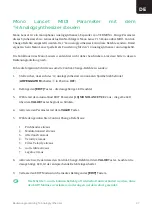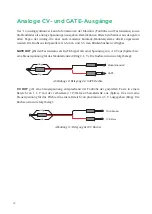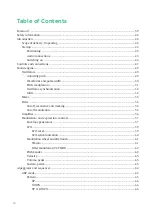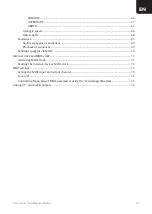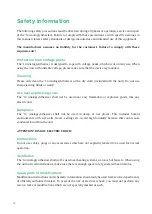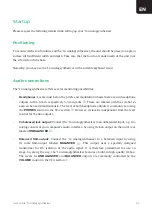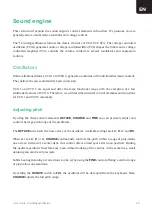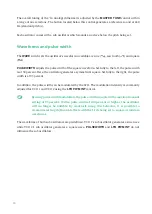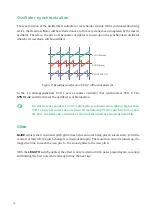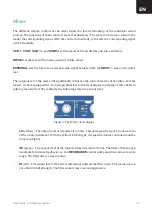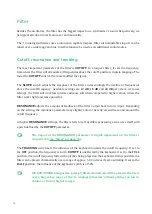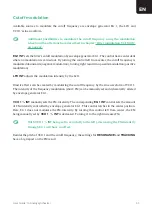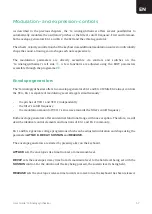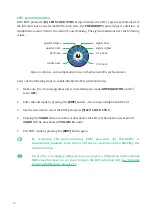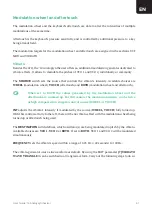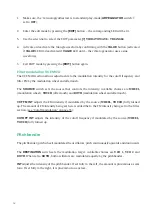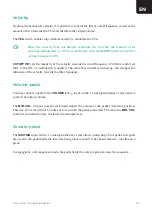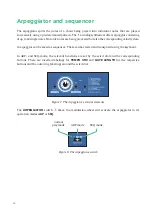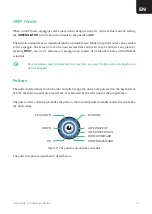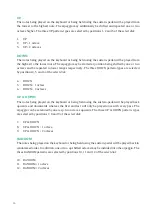
51
User Guide ’14 Analogsynthesizer
EN
Pitch modulation
Available sources to modulate the pitch are envelope generator EG 1 and, for VCO 2, the LFO as well
as the sine waveform of VCO 1.
H
Additional options for pitch modulation are available from the vibrato generator
and the pitchbender. Please see "Vibrato" on page 61 and see "Pitchbender" on
page 62.
EG 1 INT
sets the intensity of the pitch modulation carried out by envelope generator EG 1. The
control has a center dent where no modulation is carried out. Turning the control left from center
introduces a negative (downwards) pitch modulation; turning right introduces a positive (upwards)
pitch modulation.
In addition, the pitch of VCO 2 can also be modulated by the LFO. Adjust the intensity using the
LFO INT
control.
Another modulation source for VCO 2 is VCO 1’s sine waveform.
VCO 1
i
INT
sets the intensity of
the so called cross-modulation.
H
Cross-modulation, at low intensities, is suited to create a slight distortion of the
sound. Using higher intensities results in harder sounds. However, these can no
longer be played across the full pitch range of the oscillators. Combined with
oscillator-synchronization it is possible to create metallic hard lead- and bass-
sounds with great playability.
The pitch of the modulating oscillator (VCO 1) and the modulation intensity
VCO 1
i
INT
influence the results of the cross-modulation.

